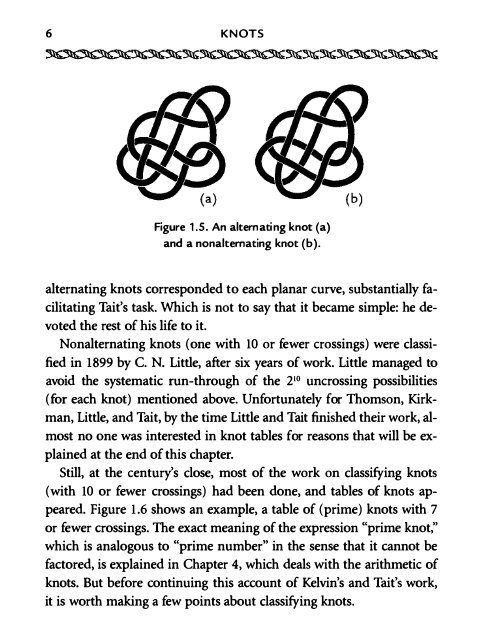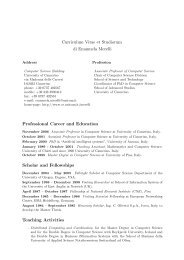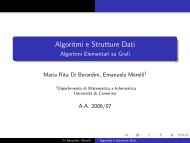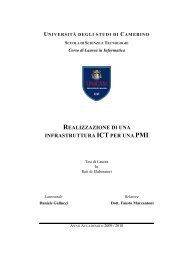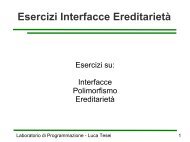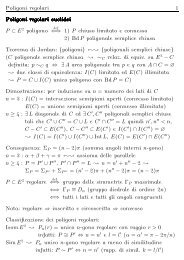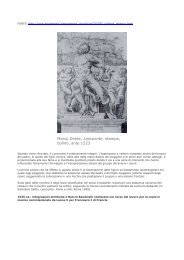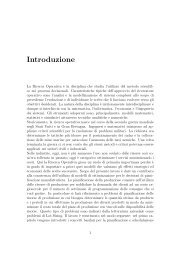Sossinsky:Knots. Mathematics with a twist.pdf - English
Sossinsky:Knots. Mathematics with a twist.pdf - English
Sossinsky:Knots. Mathematics with a twist.pdf - English
Create successful ePaper yourself
Turn your PDF publications into a flip-book with our unique Google optimized e-Paper software.
6 KNOTS<br />
Figure 1.5. An altemating knot (a)<br />
and a nonaltemating knot (b).<br />
alternating knots corresponded to each planar curve, substantially fa<br />
cilitating Tait's task. Which is not to say that it became simple: he de<br />
voted the rest of his life to it.<br />
Nonalternating knots (one <strong>with</strong> lO or fe wer crossings) were dassi<br />
fied in 1899 by C. N. Little, after six years of work. Little managed to<br />
avoid the systematic run-through of the 210 uncrossing possibilities<br />
(for each knot) mentioned above. Unfortunately for Thomson, Kirk<br />
man, Little, and Tait, by the time Little and Tait finished their work, al<br />
most no one was interested in knot tables for reasons that will be ex<br />
plained at the end of this chapter.<br />
Still, at the century's dose, most of the work on dassifying knots<br />
(<strong>with</strong> lO or fewer crossings) had been done, and tables of knots appeared.<br />
Figure l.6 shows an example, a table of (prime) knots <strong>with</strong> 7<br />
or fe wer crossings. The exact meaning of the expression "prime knot:'<br />
which is analogous to "prime number" in the sense that it cannot be<br />
factored, is explained in Chapter 4, which deals <strong>with</strong> the arithmetic of<br />
knots. Sut before continuing this account of Kelvin's and Tait's work,<br />
it is worth making a few points about dassifying knots.


